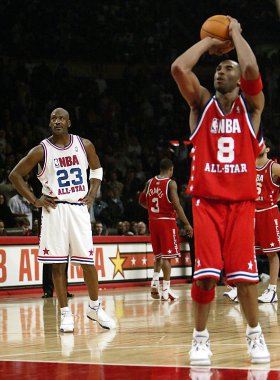From everyday interactions to global conflicts, we've hit rock-bottom in compassion. Here's how you can be more understanding
You can lose your hair, lose your temper or even lose your mind. But can you lose your empathy? Absolutely, according to recent research, and it’s happening now in America. Empathy—the ability to step imaginatively into the shoes of another person and understand their feelings and perspectives—seems to be in freefall.
The evidence is striking. The US is facing a boom in digital abuse: over 70% of adults have experienced online harassment and trolling. Studies show a long-term decline in empathy levels amongst college students of nearly 50% in the past three decades. Other research reveals that the wealthier you are, the less empathic you are likely to be—a growing concern as inequality is widening. And, disturbingly, senior executives are four times more likely to resemble psychopaths who are devoid of empathy than the average worker. Beyond the US too, it’s hard to miss the deepening empathy deficit, from terrorism to religious conflict and civil wars.
What can be done to turn around this empathy decline? Fortunately, a good deal. The latest neuroscience research tells us that 98% of us have the ability to empathise wired into our brains, but we’re living far below our empathic potential. We now confront a generational challenge – in the face of hyper-individualism and online culture – to switch on our empathic brains and regenerate our empathy, both as individuals and as a society. Here are five ideas from my new book, Empathy: Why It Matters, and How to Get It, for doing so.
1. Stop, shhhh, and listen
If you’re arguing with your partner, neighbor or child, step back for a moment and try to listen out for two things: what the other person is feeling and what they need. Give them a chance to express those feelings and needs, and even reflect back what they’ve said so they recognise that you understand them. It works to reduce the tension, both in the living room and the boardroom. Research by psychologist Marshall Rosenberg, founder of Non-Violent Communication, shows that in employee-employer disputes, if both sides agree to simply repeat what the other side just said before they start speaking themselves, conflict resolution is reached 50% faster.
2. Ask your barista how her life is going
A significant barrier to empathy is the stereotypes and prejudices we have about others, often due to snap judgements based on their appearance or accent. And we’re so often wrong about people. What do you really know about the life of the heavily pierced woman who delivers your mail? What’s happening in the mind of the quiet Sikh accountant who always sits by himself in the office cafeteria? A good prescription for empathic health is to have a conversation with a stranger at least once a week that gets beyond superficial talk.
3. Travel by armchair
“You never really understand another person until you consider things from his point of view – until you climb inside of his skin and walk around in it,” wrote Harper Lee in To Kill A Mockingbird. Reading books and watching films is a great way to take imaginative journeys into other people’s lives. To promote this kind of armchair travel, I have founded the world’s first online Empathy Library, where you can find reviews of hundreds of novels, children’s books, feature films and video shorts all on the theme of stepping into others’ shoes.
4. Look deep into your colleagues’ eyes
If we want to bring the benefits of empathy to the workplace—which include better teamwork, leadership and creativity—then it’s essential to create an empathically attuned workforce with high levels of emotional intelligence. A good place to start is for empathy tests to be part of job recruitment processes. Empathy is tough to measure, but over the last twenty years psychologists have developed effective ways of doing so, such as the Reading the Mind in the Eyes Test. When shown a pair of eyes, you must choose the correct word describing the person’s emotional state – such as arrogant, annoyed, upset or terrified. Highly empathic people are skilled at this kind of emotional reading.
5. Turn a baby into a teacher
The most profound and lasting way to reverse the empathy decline is to teach empathy skills in the classroom. The word’s most effective program, Roots of Empathy, began in Canada and is spreading worldwide: over half a million children have done it. How does it work? The teacher is a baby who visits a class group regularly over a year. The children sit around the baby and discuss questions: What’s she thinking? What’s she feeling? It’s a stepping stone to developing their empathic imaginations. And it works, increasing empathy levels, boosting cooperation, reducing school yard bullying and even increasing general academic attainment. Shouldn’t every child have the right to do programs like Roots of Empathy?
America’s empathy may be in decline but it can come back. For the sake of a healthy society, there are few more important tasks.
Roman Krznaric’s new book is Empathy: Why It Matters, and How to Get It. He is a faculty member of The School of Life in London and founder of the world’s first digital Empathy Library.
TIME Ideas hosts the world's leading voices, providing commentary and expertise on the most compelling events in news, society, and culture. We welcome outside contributions. To submit a piece, email ideas@time.com.




